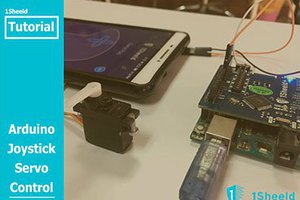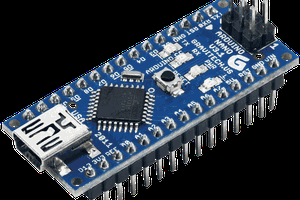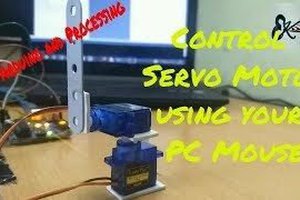Accelerometer sensors are now in most of our smartphones to give them a wide variety of usage and capabilities that we use daily, without even knowing that the one responsible for it is the accelerometer.
One of these capabilities is the controllability that the accelerometer give to us where you can control your car in racing games or use a certain app to turn your phone into a remote control for your robot or RC car that uses the accelerometer as the control tool.
So, in this Arduino Accelerometer Tutorial, we are going to use this last feature to make use of the embedded accelerometer sensor on our smartphones to control the opening and closing of a ship bridge. Of course, the bridge is just a servo motor that goes on 0 degrees to close and 90 degrees to open.
Let’s talk about the idea behind this Arduino Accelerometer Tutorial ...
Idea:
We are going to use 1Sheeld board with its companion Android/iOS app and use the accelerometer shield where any change in any x-axis or y-axis or z-axis will be sent to the Arduino and hence we can decide whether to change the servo degree to 0 or 90.
Getting started:
If this is your first time to deal with 1Sheeld or you want to learn more about it, I recommend checking this quick and easy getting started tutorial.
And if you haven't tried servo motor before, I recommend checking this quick video.
Now, after you've become a little bit familiar with 1Sheeld, let's start!
Step 1: Hardware components:
- Arduino Uno.
- 1Sheeld+ board.
- S90 servo motor.
- LED.
- 3 * Male to male wires.
- Arduino USB cable or 9-12v battery.
- Android/iOS phone with 1Sheeld App installed on it.
Step 2: Software components:
Step 3: Connection and Schematic:
- Plug the 1Sheeld board into your Arduino as this:
- Connect the servo motor and the LED as illustrated below:
- As I’m using an Arduino UNO board I have switched the 1Sheeld power button to operate on 5v (Not the 3.3v):
- 1Sheeld have 2 modes: Uploading mode and Operating mode. You can switch between them using the switch close to the Digital pins and is called “UART SWITCH” on 1Sheeld and “SERIAL SWITCH” on 1Sheeld+.
Firstly, you slide the switch towards the “SWITCH” notation which turns the 1Sheeld board into the Uploading mode to let you upload the Arduino code.
Secondly, after you finish uploading the code, slide the switch towards the “UART” notation (or “SERIAL” at 1Sheeld+ board) which turns the 1Sheeld board into the Operating mode to communicate with your smartphone 1Sheeld App.
- Connect the Arduino via your PC using Arduino USB cable.
Code:
I would recommend checking the Arduino Accelerometer Shield documentation to know more about the Arduino Accelerometer Shield functionalities and how to use them.
Now, switch the 1Sheeld board to the Uploading mode, upload this code
/*
Arduino Accelerometer Project
This project shows an application on 1Sheeld's Accelerometer shield.
By using this project, you can wirelessly control
the ship bridge by using Accelerometer shield from 1Sheeld.
OPTIONAL:
To reduce the library compiled size and limit its memory usage, you
can specify which shields you want to include in your sketch by
defining CUSTOM_SETTINGS and the shields respective INCLUDE_ define.
*/
/* Include required shields */
#define CUSTOM_SETTINGS
#define INCLUDE_TERMINAL_SHIELD
#define INCLUDE_TEXT_TO_SPEECH_SHIELD
#define INCLUDE_ACCELEROMETER_SENSOR_SHIELD
/* Commands which will be converted to speech */
const char...
Read more »
 amr.mostaafaa
amr.mostaafaa

 ken.do
ken.do
 engineerkid1
engineerkid1